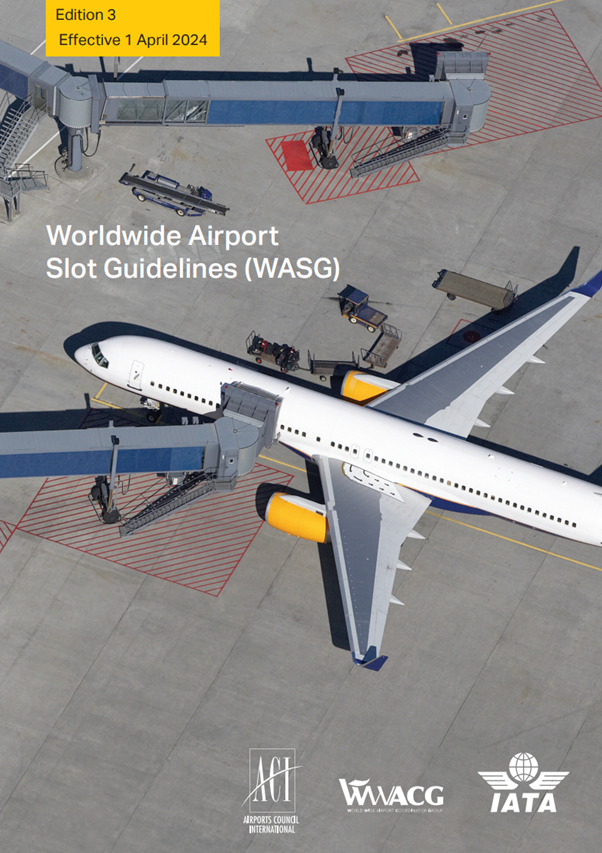
Imagine thousands of instruments playing at once, a chaotic cacophony instead of a beautiful symphony. That’s what global air travel would be without the Worldwide Airport Slot Guidelines (WASG), the invisible conductor orchestrating smooth schedule planning at congested airports around the world.
Just like every journey has a beginning and an end, so does every flight. But what if the rules at each airport were different? Airlines wouldn’t be able to weave the intricate web of connections we rely on.
Industry guidance has therefore developed to help promote the consistency required to meet market demand, and to help squeeze out efficiencies from capacity constrained airports.
Origins and upkeep of the WASG
The WASG is published by the International Air Transport Association (IATA), Airport Councils International (ACI), and the Worldwide Airport Coordinators Group (WWACG). These organizations also appoint an equal number of airline, airport and coordinator representatives to the Worldwide Airport Slot Board (WASB), which has the responsibility for making sure the WASG remains current and the policy representative.
The WASG originally dates back to 1974 but as a live document has been continually revised. Most recently, a strategic review of the guidelines was carried out between 2017-2019, and following the establishment of the WASB in 2020, various policies have been reviewed and revised. A strong emphasis remains for the WASG to be representative, fit for purpose, and deserving of its reputation for providing global best practice.
Guiding objectives
Think of it as a set of guiding principles. Its core objective? “…to ensure the most efficient declaration, allocation and use of available airport capacity in order to optimize benefits to consumers, taking into account the interests of airports and airlines.” Other objectives include:
“a) To facilitate consumer choice of air services, improve global connectivity and enhance competition at congested airports for passengers and cargo.
b) To provide consumers with convenient schedules that meet demand, are consistent from one season to the next, and reliable in terms of their operability.
c) To ensure that slots are allocated at congested airports in an open, fair, transparent and non-discriminatory manner by a slot coordinator acting independently.
d) To realize the full capacity potential of the airport infrastructure and to promote regular reviews of such capacity and demand that enable effectual capacity declarations for slot allocation on a seasonal basis.
e) To balance airport access opportunities for existing and new airlines.
f) To provide flexibility for the industry to respond to regulatory and changing market conditions, as well as changing consumer demand.
g) To minimize congestion and delays.”
The objectives are purposefully broad and highlight the range of considerations associated with insufficient airport capacity. However they also appear to raise more questions in light of demand exceeding supply. For example, how do you promote both new competition and connectivity with a limited supply of capacity? The reality is, choices will have to be made and balance found. But fear not, the WASG guides the industry on these decisions!
A brief overview
The Slot Report will review key WASG policy and principles in future articles, but for now we emphasize the vital role the WASG plays in managing scarce airport capacity. It is truly the global standard which is adopted across the industry. The guidance is extensive in that it brings structure to:
- The categorization of airports based upon the demand and supply imbalance being experienced,
- Encourages regular airport capacity assessments, making sure no spare capacity goes to waste,
- The allocation of capacity across competing airlines requests,
- The monitoring of capacity use, for the promotion of efficient operations and future entitlement.
There is far more included in the WASG than mentioned in this brief overview.
Global application
With regards to the implementation of the WASG, it has become the trusted resource that the industry turns to. There is a strong alignment to the WASG by regulation in countries around the world. And perhaps most importantly, the results of applying the WASG are clear for all to see.
The most congested airports globally, places like London Heathrow, are achieving capacity utilization figures in excess of 99%. Using the same example, London is considered one of the best connected cities worldwide, and where there is sufficient consumer demand, competition is strong.
When fully applied, the WASG performs undeniably well.
